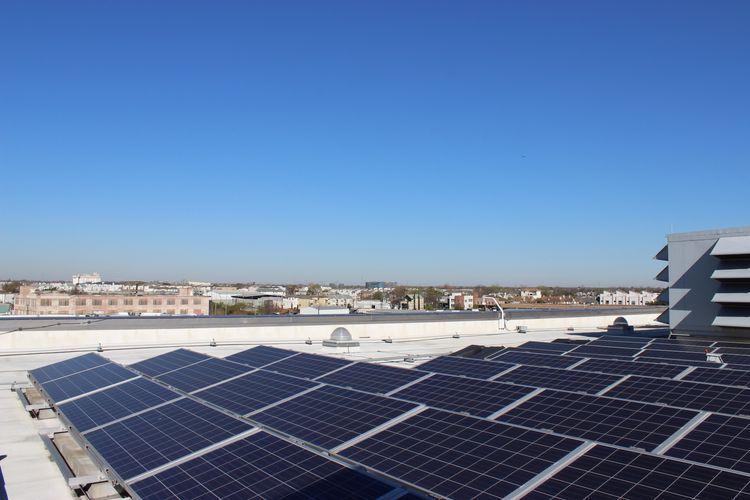
The sun is both an asset and an enemy in green building. Learn to use daylighting to your advantage while beating the heat. Orient you new home, building, or addition to provide optimal access to daylight. Minimize direct sun, and its associated heat, with smaller east and west exposures and larger north and south exposures. Overhangs, shade trees and outdoor structures protect South and West facing windows during the hottest months, and can help save up to 20% energy use per year.
Support fundamental human needs for daylight and a connection to the outdoors, provide access to views and daylight from all primary occupied spaces within the building. Design to minimize glare and heat from daylight through appropriate shading devices and reflective materials. In an office building, install glass within interior walls and lower workstation panels to maintain views deep into the space.
What is Solar Power?
Solar power is the capturing of the sun’s ray and converting them into heat of energy. The sunlight can be converted directly using photovoltaic cells, or indirectly and stored for later usage.
There are two (2) types of solar energy: thermal and electric.
- Thermal Solar Power is free and is found all around you. It is what provides heat to everything we come in contact with, and heats up a medium that is used in its heated form.
- Electric Solar Power is created through photovoltaic cells (solar cells) which gain power from the sun to create electricity for our use.
How Does Solar Power Work?
- Solar panels are mounted in a location where they can collect energy from the sun and converts it to direct current (DC) electricity.
- Direct Current (DC) energy can be stored in a battery system.
- Direct current energy can be converted by an inverter into alternating current electricity and fed directly into your home or business, just as if it were straight from the power grid.
- In some instances if you produce more electricity than needed to power your home or business, you are able to send the excess back to the power grid and in some municipalities receive credit from utility companies, call net. Metering.
-
Benefits of Solar Power
Decreases pollution
Reduces electricity costs
Increases the value of your home
Convenient and Reliable
Direct Current (DC) energy can be stored in a battery system.
- Direct current energy can be converted by an inverter into alternating current electricity and fed directly into your home or business, just as if it were straight from the power grid.
In some instances if you produce more electricity than needed to power your home or business, you are able to send the excess back to the power grid and in some municipalities receive credit from utility companies, call net. Metering.
Houston’s Code Enforcement Building
6.6 kW solar-electric system on was donated by BP Solar as part of DOE Solar America City program.
City Hall Annex
6.6 kW solar-electric system on the rooftop was donated by BP Solar as part of DOE Solar America City program.
George R. Brown Convention Center
100 kW solar-electric system on the rooftop is one of the largest installations in the region.

